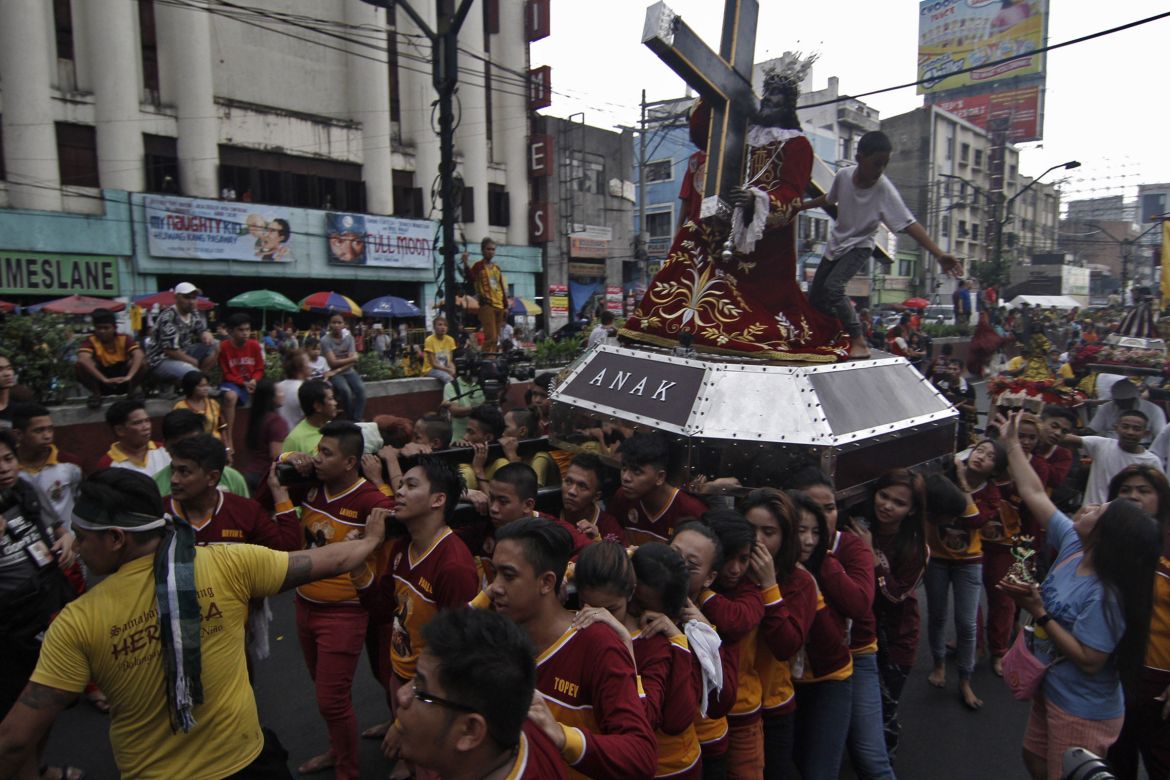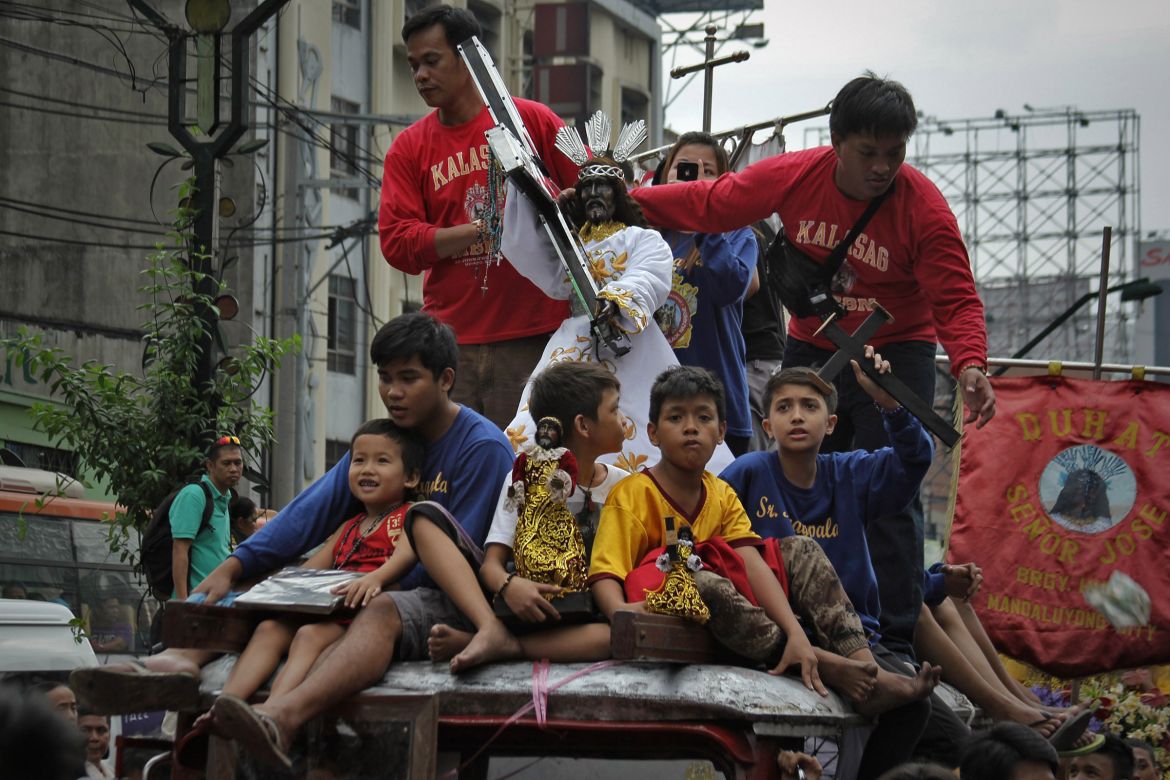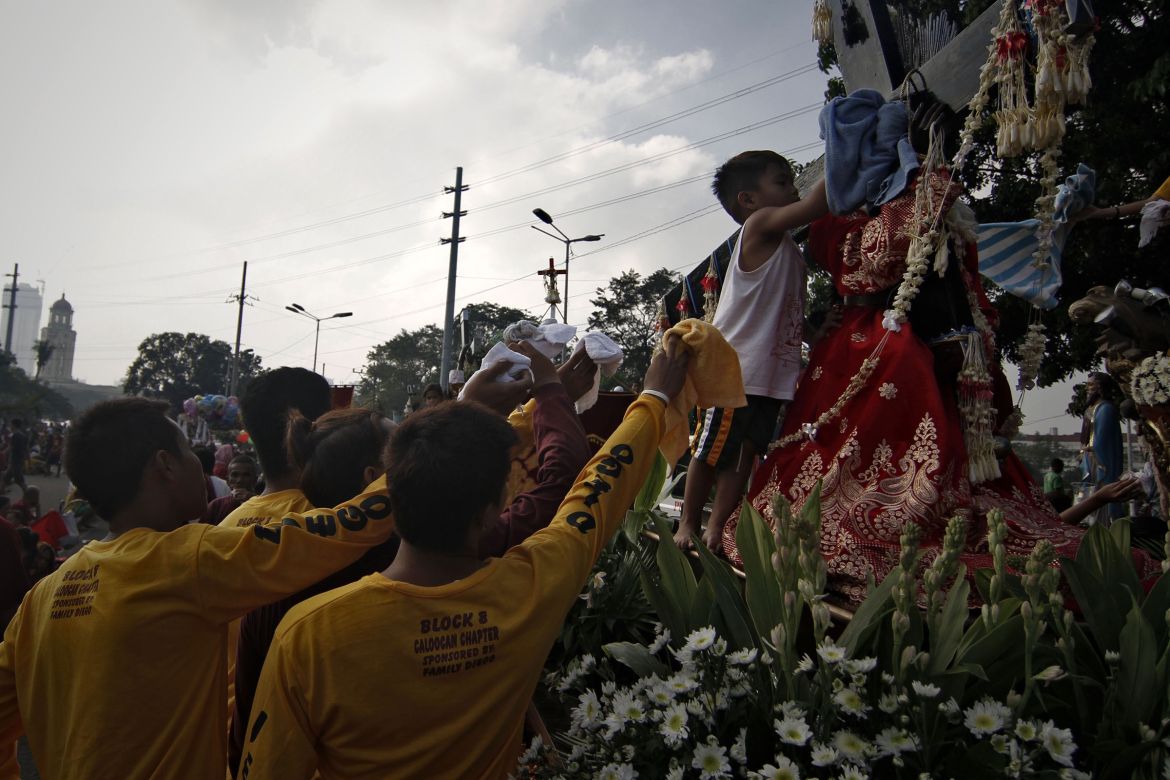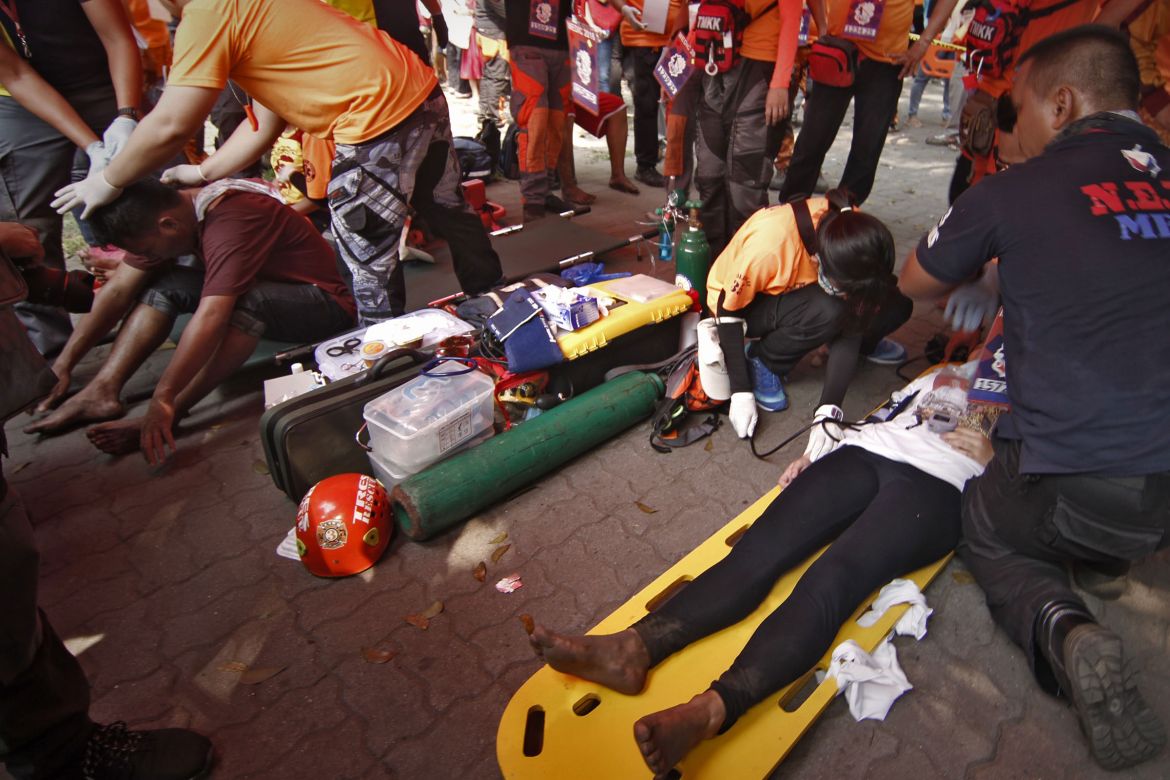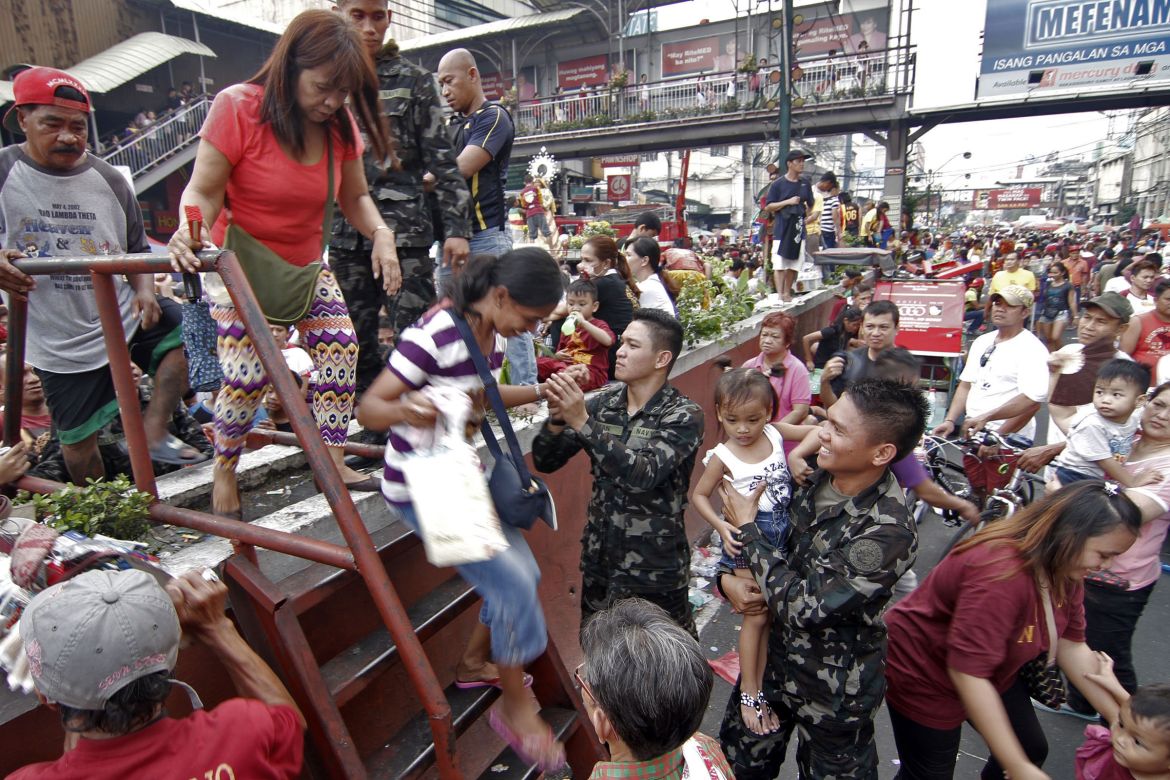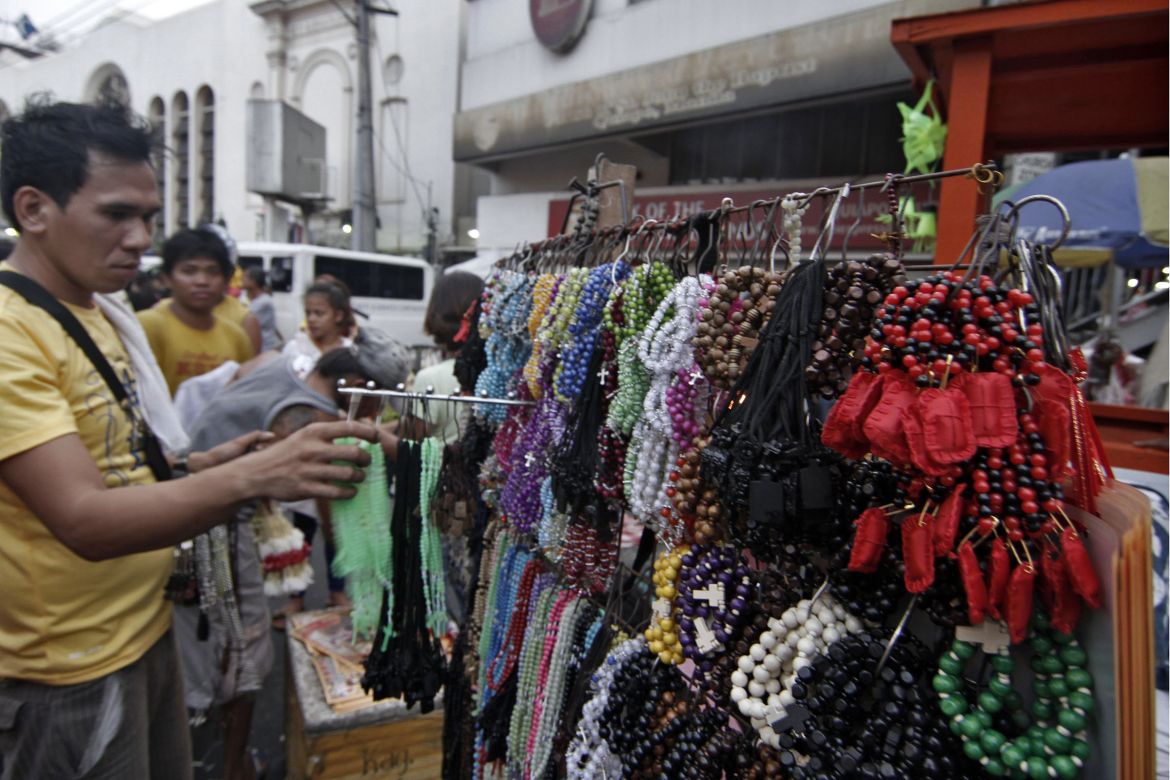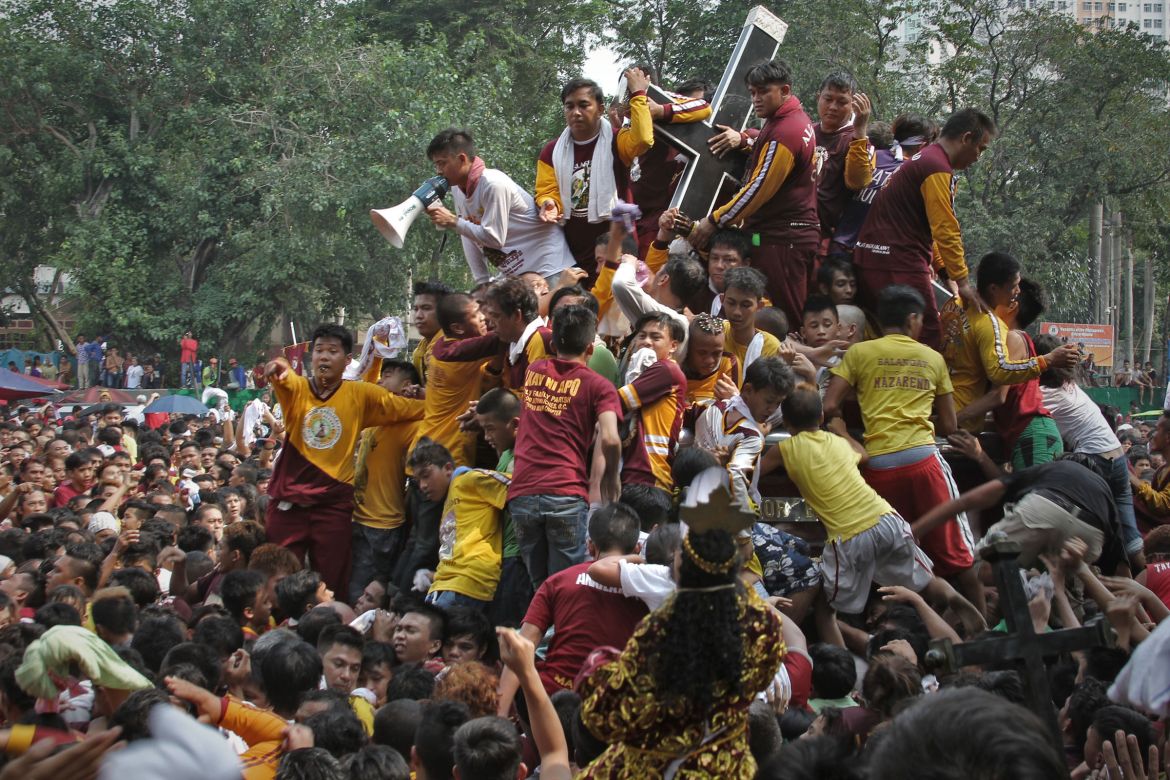In Pictures
Black Nazarene procession in the Philippines
Millions of devotees joined the Translacion of Black Nazarene statue in Manila, with prayers and hopes for a miracle.
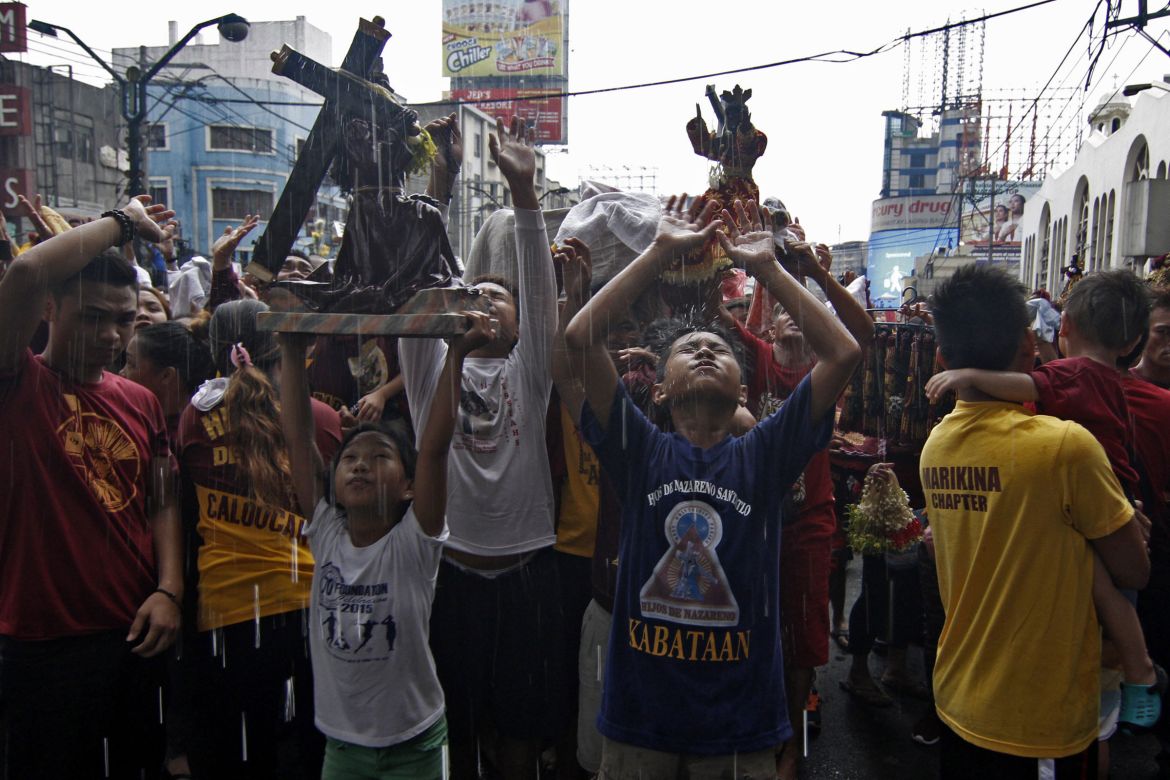
Manila, Philippines – The religious ritual, Translacion, is the nearly 20-hour-long procession of the Black Nazarene statue, which is believed to grant miracles, through the streets of Manila. It draws millions of devotees to the capital of the Philippines for the spectacular religious celebration every year.
The Black Nazarene statue is believed to have been carved out of black mesquite wood brought from Mexico to the Philippines by Augustinian friars in 1606. The Translacion commemorates the transferring of the iconic image of Jesus Christ from where it was enshrined in Intramuros to Minor Basilica in the Quiapo district in Manila on January 9, 1767.
Over the centuries, the carved figure has survived numerous disasters, even surviving the fiery destruction of Quiapo during the Liberation of Manila in World War II. This resiliency through the ages and the mysticism that surrounds it draws more and more devotees every year to the Black Nazarene.
The festivity starts on January 7, with devotees bringing their own statuettes or replica images of the Black Nazarene to be blessed. Devotees endure sleep deprivation, extreme heat, hunger, and even injuries during the procession of the statue for a chance to touch, kiss, or simply feel close to the Black Nazarene.
Many critics say that the parade is all about fanaticism and mindless idolatry, but Jayeel Serrano Cornelio, sociologist and director of the Development Studies programme at the Ateneo de Manila University, disagrees. “It takes a lot of courage, conviction and willpower to do what a devotee does,” he said. “Many of these people who comment about the procession have not been there.”
About 5,000 police and another 900 military personnel were deployed to ensure the security at this year’s parade. More than 1,500 were treated for injuries, with one cardiac-related fatality, according to the government and Red Cross.
